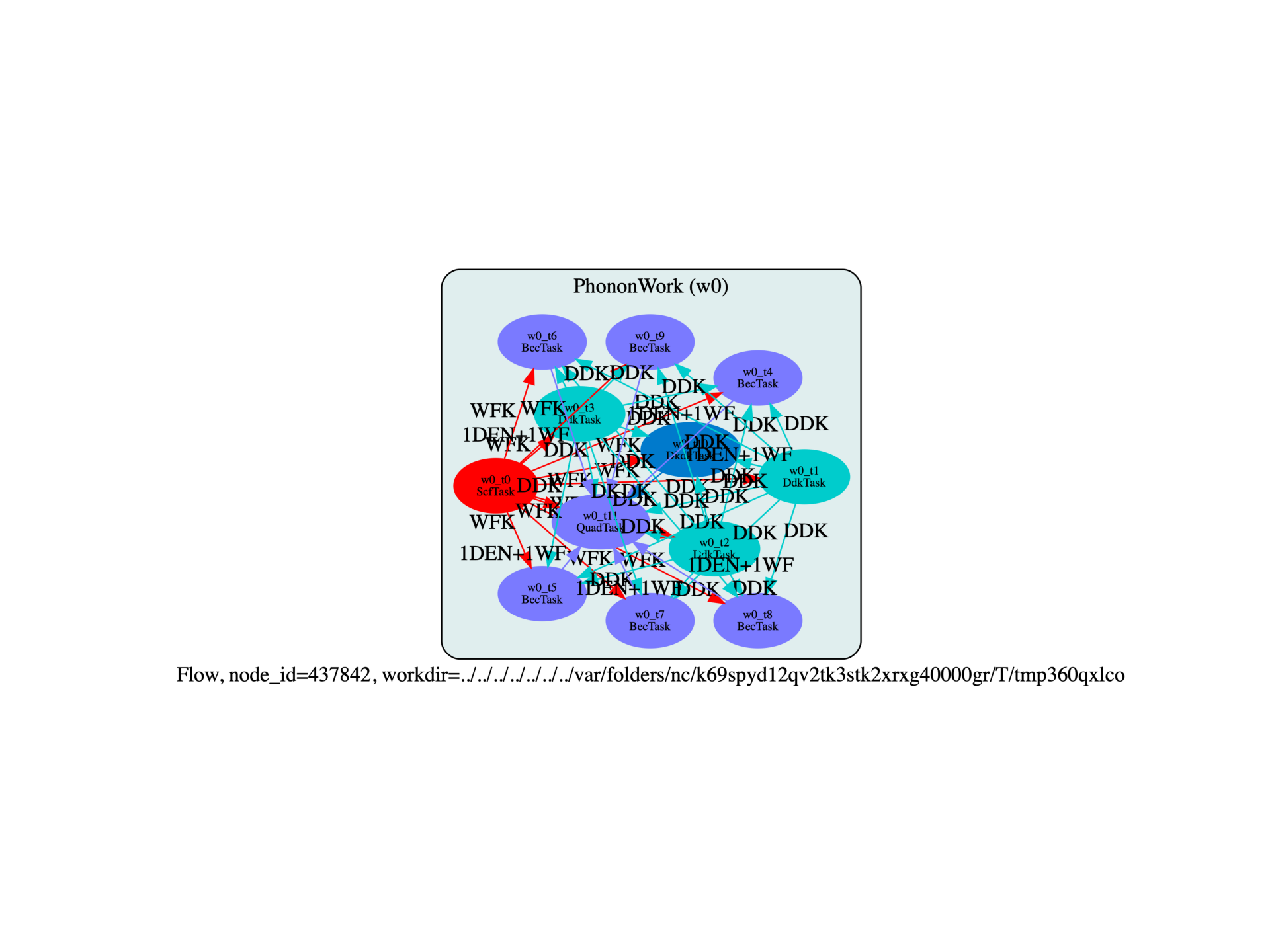Note
Go to the end to download the full example code.
Phonons + dynamical quadrupoles
This example shows how to compute the dynamical matrix of GaP on a user-defined q-mesh
including Born effective charges, the macroscopic dielectric matrix and the dynamical quadrupoles Q*.
The final results (out_DDB, out_DVDB) will be produced automatically at the end of the run
and saved in flow_phonons_with_quad/outdata/.
The Q* tensor may be needed to improve the accuracy of the Fourier interpolation of the phonon frequencies, especially in the long-wavelength limit q –> 0.
This example is based on <https://docs.abinit.org/tests/tutorespfn/Input/tlw_4.abi>
Note that only selected features are compatible with dynamical quadrupoles. Please consult <https://docs.abinit.org/topics/longwave/>

import sys
import os
import abipy.abilab as abilab
import abipy.data as abidata
from abipy import flowtk
def build_flow(options):
"""
Create a `Flow` for phonon calculations including
eps_inf, Born effective charges and dynamical quadrupoles
"""
# Working directory (default is the name of the script with '.py' removed and "run_" replaced by "flow_")
if not options.workdir:
options.workdir = os.path.basename(sys.argv[0]).replace(".py", "").replace("run_", "flow_")
pseudos = abidata.pseudos("31-Ga.LDA.fhi", "15-P.LDA.fhi")
# Initialize the structure from an abinit string
# Other approaches (e.g. from cif files) are available as well.
structure = abilab.Structure.from_abistring("""
acell 1.0 1.0 1.0
rprim 0.0 5.023016083002 5.023016083002
5.023016083002 0.0 5.023016083002
5.023016083002 5.023016083002 0.0
# Definition of the atom types and positions
# ******************************************
ntypat 2
znucl 31 15
natom 2
typat 1 2
xred
0.0000000 0.0000000 0.0000000
0.2500000 0.2500000 0.2500000
""")
# Build input for GS calculation
scf_input = abilab.AbinitInput(structure, pseudos=pseudos)
# We use parameters similar to the ones in https://docs.abinit.org/tests/tutorespfn/Input/tlw_4.abi
scf_input.set_vars(
nband=4,
ecut=5.0,
ngkpt=[4, 4, 4],
shiftk=[
[0.5, 0.5, 0.5],
[0.5, 0.0, 0.0],
[0.0, 0.5, 0.0],
[0.0, 0.0, 0.5],
],
diemac=12.0,
nstep=100,
tolvrs=1.0e-10,
#tolvrs=1.0e-18, # This is the value used in tlw_4.abi
# but it is not always possible to reach this precision in more complex systems.
#useylm=1,
#ixc=7
#iomode=3,
#paral_kgb=1,
)
# At the time of writing, Q* calculations are implemented only for
# NC scalar-relativistic pseudos without non-linear core correction.
# This section shows how to use the Pseudo API to perform this kind of check
# before running the calculation.
for pseudo in scf_input.pseudos:
if not pseudo.isnc:
raise RuntimeError("Only NC pseudos are compatible with Q*")
# Initialize the flow
flow = flowtk.Flow(workdir=options.workdir, manager=options.manager)
# Compute phonons on the ddb_ngqpt q-mesh.
# Include Born effective charges and dynamical quadrupoles via `with_quad=True`.
#
#ddb_ngqpt = [1, 1, 1]
ddb_ngqpt = [2, 2, 2]
ph_work = flowtk.PhononWork.from_scf_input(scf_input, qpoints=ddb_ngqpt, is_ngqpt=True,
with_becs=True, with_quad=True, ndivsm=5)
# Add the phonon work to the flow
flow.register_work(ph_work)
return flow
# This block generates the thumbnails in the AbiPy gallery.
# You can safely REMOVE this part if you are using this script for production runs.
if os.getenv("READTHEDOCS", False):
__name__ = None
import tempfile
options = flowtk.build_flow_main_parser().parse_args(["-w", tempfile.mkdtemp()])
build_flow(options).graphviz_imshow()
@flowtk.flow_main
def main(options):
"""
This is our main function that will be invoked by the script.
flow_main is a decorator implementing the command line interface.
Command line args are stored in `options`.
"""
return build_flow(options)
if __name__ == "__main__":
sys.exit(main())
Total running time of the script: (0 minutes 3.113 seconds)